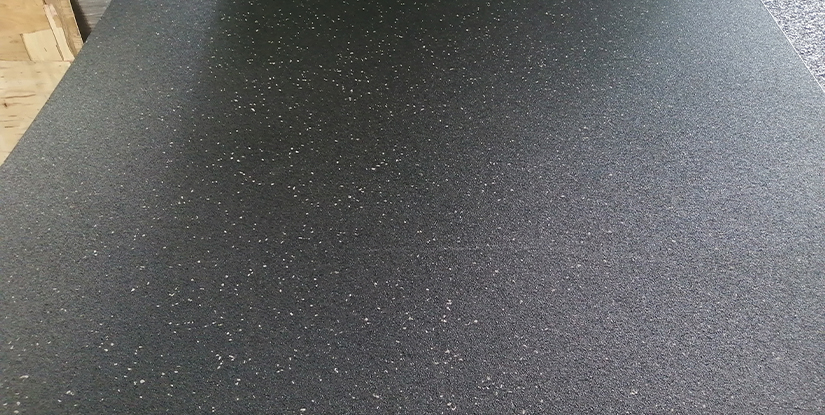Treadmill Mat for Tile Floor – Protect Tile, Reduce Noise & Vibration

Why a Treadmill Mat Is Essential for Tile Floors
Tile floors are durable and attractive, but they are vulnerable to heavy fitness equipment. A purpose-designed treadmill mat protects tile from scratches and chips, dampens vibration, reduces noise transmission, and prevents slippage. For home gyms and multi-use rooms, the right mat preserves the floor finish and extends the life of your treadmill.
Key Benefits of Using a Treadmill Mat on Tile
- Floor protection: Dense rubber or PVC mats act as a barrier against grit and the treadmill’s feet, preventing surface damage.
- Noise reduction: Mats absorb impact noise and machine hum, lowering sound transfer to adjacent rooms and levels.
- Vibration control: Anti-vibration properties reduce rocking and stabilise the treadmill, improving user safety.
- Moisture and dirt containment: Mats trap sweat and debris, making cleanup easier and protecting grout from contaminants.
- Improved traction: Non-slip surfaces keep the treadmill secure on smooth tile, preventing movement during use.
Materials and Thickness: What Works Best
Treadmill mats are typically made from PVC, EVA foam, or recycled rubber. For tile floors, choose materials that balance cushioning with stability. Recycled rubber offers superior durability and sound dampening, while heavy PVC and dense EVA foam provide a slimmer profile with good protection.
Thickness matters: 3–6 mm mats protect against scratches and minor vibration. For enhanced noise and vibration reduction, consider 6–10 mm thick rubber mats. Avoid overly soft or thick foam that can cause instability or interfere with treadmill leveling.
Size, Shape, and Edge Design
Measure your treadmill footprint before purchasing. The mat should extend at least 6–12 inches beyond the treadmill’s base on all sides to catch debris and provide a stable perimeter. Common shapes are rectangular and contour-cut; contour-cut mats match the treadmill’s profile for a neat fit.
Be sure edges are beveled or tapered to eliminate trip hazards and to avoid chipping tile edges when stepping on or off the machine.
Non-Slip Surface and Backing
A non-slip top surface prevents accidental stepping slips, while a textured backing keeps the mat anchored to the tile. Mats with a polyurethane or rubberized backing typically provide the best grip on smooth tile. If the tile is extremely glossy, consider a backing combined with double-sided low-profile tape for additional security—ensure tape is safe for tile finishes.
Installation and Positioning
- Clean tile thoroughly before placing the mat to remove dust and grit.
- Place the mat in the intended location and center the treadmill on top—use helper if unit is heavy.
- Allow some time for the mat to settle flat; PVC mats may need a few hours to relax after unrolling.
- Check treadmill level after installation and adjust feet as needed.
Maintenance and Cleaning
Regular maintenance keeps both mat and tile in good condition. Sweep or vacuum the area weekly to remove grit that can abrade tile through the mat. Wipe the mat with a mild detergent solution and rinse; avoid corrosive cleaners or petroleum-based products that degrade some mat materials. Periodically lift the mat to inspect the tile and clean beneath—this prevents trapped moisture from harming grout over time.
Buying Checklist: How to Choose the Right Mat
- Material: rubber for durability, PVC/EVA for a lighter option.
- Thickness: 3–6 mm for basic protection; 6–10 mm for extra vibration/noise control.
- Dimensions: extend 6–12 inches beyond treadmill footprint.
- Backing: textured or rubberized for traction on tile.
- Edge design: beveled for safety and floor protection.
- Warranty and return policy: confirm compatibility and satisfaction guarantees.
Common Concerns and Solutions
Will a mat cause the treadmill to slip when using incline? High-quality mats with a secure backing resist movement during incline use; ensure the treadmill feet are properly adjusted and use tape only when necessary. Can a mat trap moisture under tile? Regularly lift and dry the area to prevent prolonged moisture exposure. Will it void my treadmill warranty? Generally no, but avoid adhesives that alter the treadmill’s base or void manufacturer guidelines.
Conclusion
Investing in a treadmill mat for tile floors is a practical step to protect an expensive surface and improve the exercise experience. Select a mat that balances thickness, material, and backing quality, and maintain it regularly to extend both mat and tile life. With the right choice, you will reduce noise, minimise vibration, and keep your tile looking like new.
FAQs
- Can I use any treadmill mat on tile? Yes, but choose one with a grippy backing and appropriate thickness for tile.
- How thick should the mat be? 3–6 mm for basic protection; 6–10 mm for extra noise and vibration control.
- Will a mat prevent scratches? Yes, if it is dense and free of embedded grit.
- Do mats cause moisture problems? Not if you lift and dry them periodically.
- Is rubber better than PVC? Rubber offers superior durability and sound dampening; PVC is lighter and more affordable.
- Can I use adhesive tape on tile? Use low-residue tape designed for floors; test in an inconspicuous spot first.
- Will the mat affect treadmill leveling? It can; always re-level the treadmill after installing the mat.
- How do I clean the mat? Wipe with mild detergent and water; avoid solvent cleaners.
- Should the mat extend beyond the treadmill? Yes, extend 6–12 inches on all sides for best protection.

